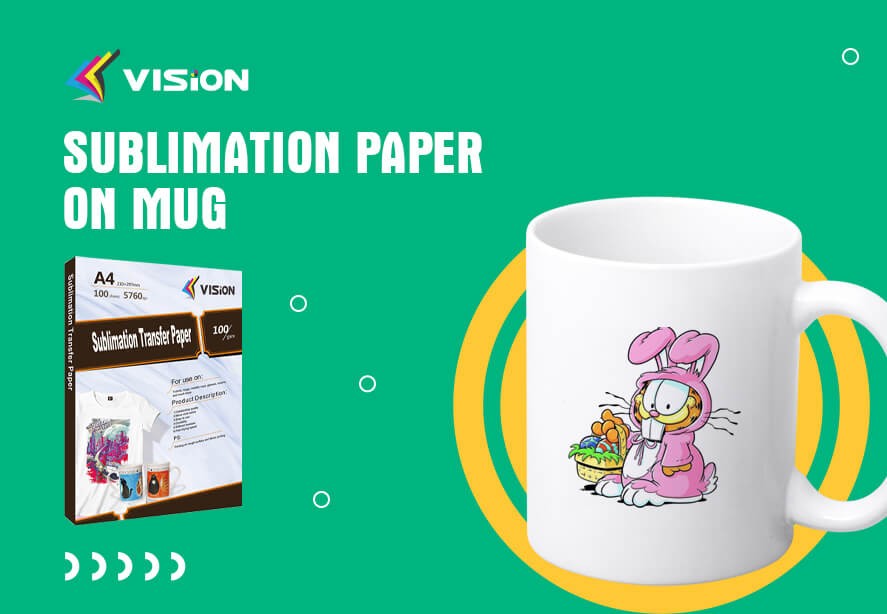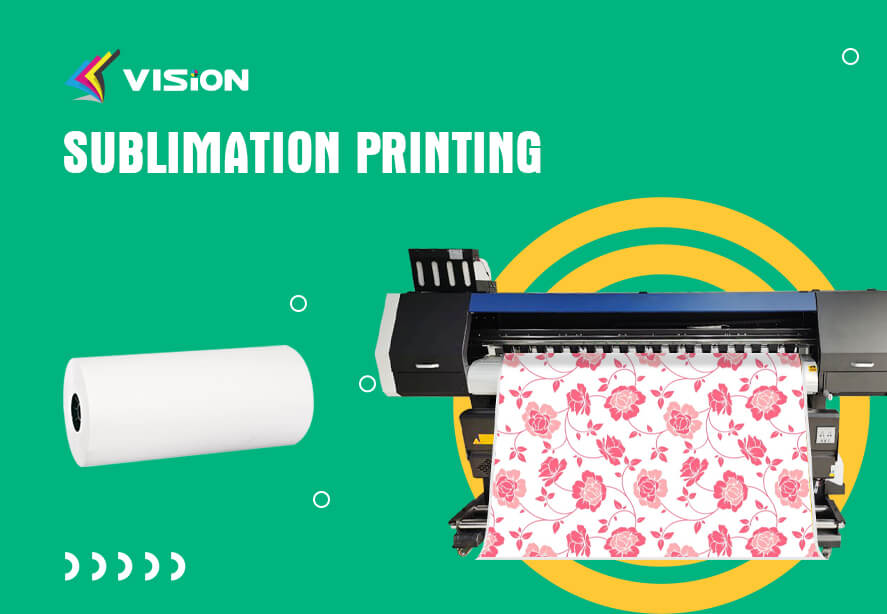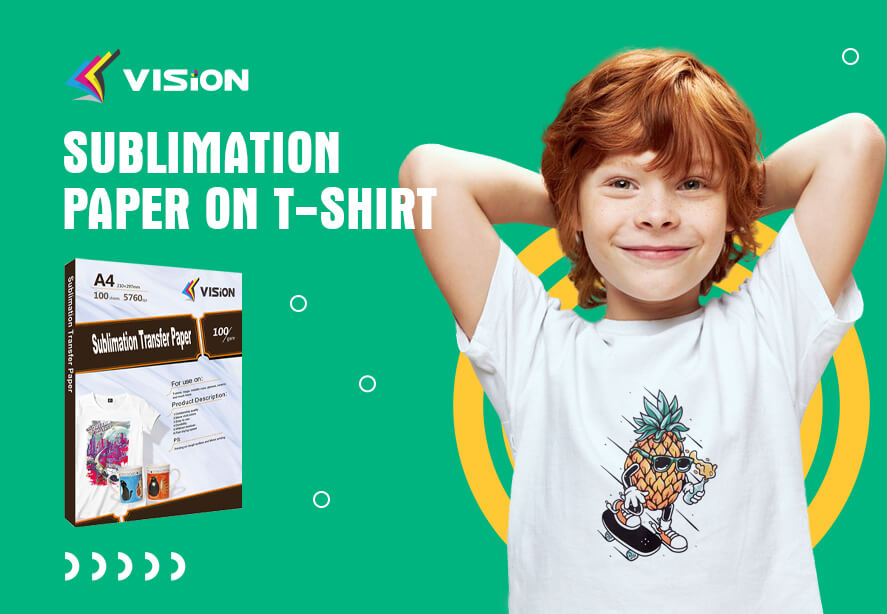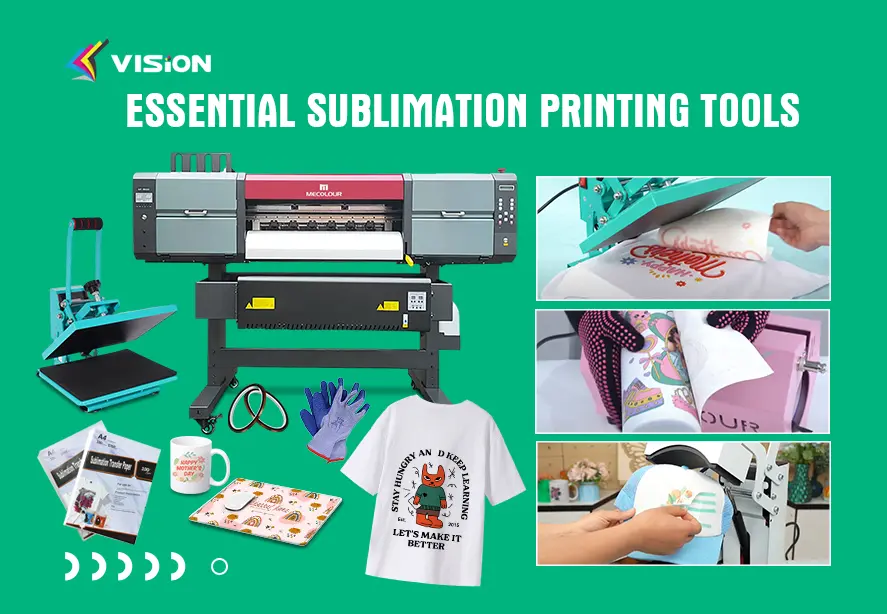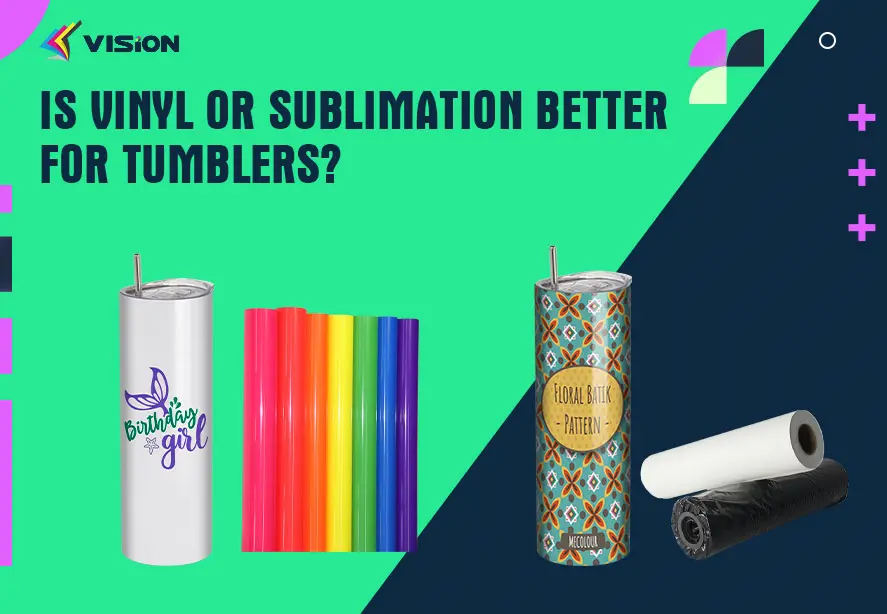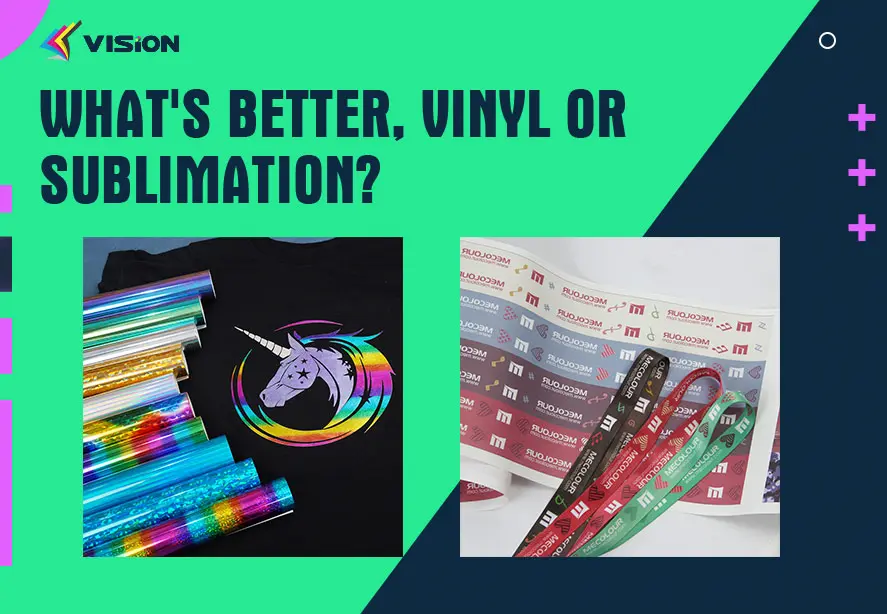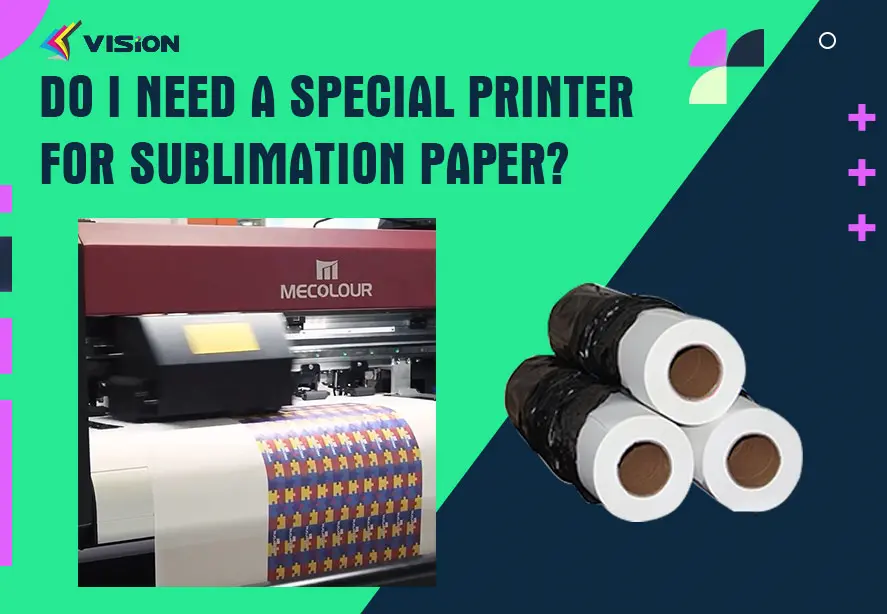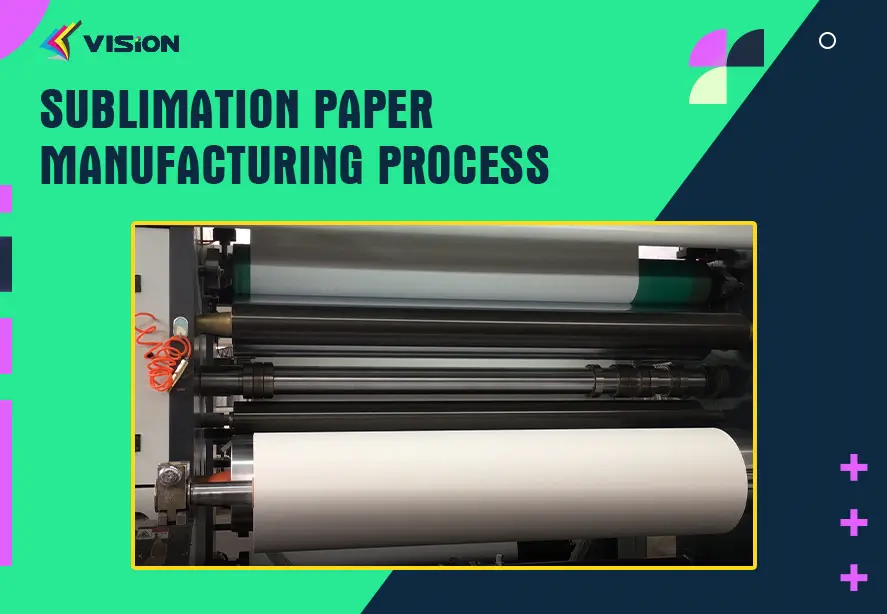How Sublimation Paper Affects Image Quality

Sublimation printing has gained immense popularity in the world of digital printing due to its ability to produce vibrant and long-lasting images on various substrates. Achieving high-quality image results in sublimation printing requires the perfect combination of several factors, with sublimation paper playing a crucial role. In this article, we will explore how sublimation paper affects image quality and the factors to consider when choosing the right paper for your printing projects.
Introduction
A. Importance of image quality in sublimation printing
In sublimation printing, image quality is of paramount importance. Whether you’re creating personalized gifts, custom apparel, or promotional items, the quality of the printed image directly impacts the overall visual appeal and customer satisfaction. Crisp, vibrant, and detailed images are essential to convey the intended message and create a lasting impression.
B. Role of sublimation paper in achieving high-quality images
Sublimation paper acts as a medium for transferring the printed image onto the substrate. It facilitates the transfer of sublimation inks from the printed paper to the target material, ensuring accurate color reproduction and image clarity. The quality of the sublimation paper directly influences the final output, making it a critical component in the printing process.
If you want to learn more about definition of sublimation paper and its role in printing process, you can read this blog.
How sublimation paper affects image transfer
Absorption and drying characteristics of sublimation paper
Sublimation paper must have excellent ink absorption properties to prevent the ink from spreading or bleeding, which could result in blurred images. Additionally, it should dry quickly to avoid smudging and allow for precise color reproduction and image clarity.
Coating technology for improved ink transfer
The quality of the coating on sublimation paper significantly impacts the ink transfer process. A well-formulated coating ensures even distribution of the ink, resulting in vibrant and sharp images. The coating also prevents the ink from penetrating too deeply into the paper, leading to better color saturation and improved detail retention.
Impact of paper weight and thickness on image quality
The weight and thickness of sublimation paper influence the final image output. Thicker papers tend to absorb more ink, which can enhance color vibrancy and saturation. However, overly thick papers may require adjustments in printer settings and longer drying times. It’s important to strike a balance between paper thickness and the desired image characteristics.
Factors Influencing Image Quality
A. Printer compatibility with sublimation paper
Different printers have varying specifications and requirements when it comes to sublimation printing. It’s crucial to ensure that your chosen sublimation paper is compatible with your printer model. Printer manufacturers often provide guidelines and recommendations regarding the types of paper suitable for their machines.
B. Ink absorption and color vibrancy
Sublimation paper with excellent ink absorption properties promotes vibrant and vivid colors in the printed images. The paper should effectively hold the inks on its surface, preventing excessive bleeding or feathering. The result is sharp and vibrant images with accurate color reproduction.
C. Resistance to smudging and bleeding
High-quality sublimation paper resists smudging and bleeding, ensuring clean and crisp image transfer. Smudging can occur during the handling or heat press process, and bleeding can lead to color mixing or blurring of the image. Using sublimation paper with good resistance to these issues helps maintain image integrity.
D. Sharpness and detail retention in printed images
The level of sharpness and detail retention in printed sublimated images is influenced by the quality of the sublimation paper. A paper with a well-formulated coating and proper ink absorption characteristics ensures precise ink placement, resulting in sharp and detailed images with crisp lines and fine details.
E. Longevity and durability of sublimated prints
Sublimation prints are expected to withstand regular handling, washing, and exposure to various environmental factors. The choice of sublimation paper can impact the longevity and durability of the printed images. High-quality papers with appropriate coating and ink absorption properties contribute to long-lasting and fade-resistant prints.
Types of Sublimation Paper
A. Brief overview of various sublimation paper options available
There are different types of sublimation papers available in the market, each catering to specific printing needs and requirements. Understanding the differences between these papers helps in making an informed decision based on the desired image outcome and application.
B. Differentiating factors between sublimation papers
Matte vs. glossy finishes
Sublimation papers come in both matte and glossy finishes. Matte papers offer a non-reflective surface, ideal for designs that require minimal glare. On the other hand, glossy papers provide a shiny finish, enhancing color vibrancy and image sharpness.
Drying Time
Dye sublimation paper can be divided into fast dry and instant dry according dry time. As a distributor,if you don’t know how to choose the two papers,please visit this blog to help you.
Weight and thickness variations
Sublimation papers come in various weights and thicknesses. Thicker papers are generally more absorbent and can result in enhanced color saturation. Lighter papers may be preferred for certain applications where reduced drying times and printer adjustments are necessary.
Sticky Sublimation paper
According to the viscosity of paper, it can be classified into three categories: high viscosity, medium viscosity, and low viscosity.It’s important to choose the appropriate viscosity of paper based on the specific requirements of your printing project. Factors such as desired image quality, ink control, drying time, and the type of printer and inks being used should be taken into consideration when selecting the right viscosity of paper. So if you want to know more introduction about sticky sublimation paper, this blog will give you some advice.
Sublimation Paper Size
VISION offers both sheet and roll options for sublimation paper to cater to different printing needs and preferences. Both sheet and roll sublimation papers have their advantages depending on the specific printing requirements. Sheet paper offers convenience and precise sizing, while roll paper provides flexibility and cost-effectiveness for larger-scale printing. The choice between sheet and roll sublimation paper depends on factors such as the printing volume, project size, and individual preferences.
Choosing the Right Sublimation Paper
A. Assessing the requirements of the printing project
How to choose the right sublimation paper? Before choosing a sublimation paper, it’s essential to evaluate the specific requirements of your printing project. Consider factors such as the type of substrate, desired image quality, intended use, and budget constraints. Understanding these aspects helps narrow down the options and select the most suitable paper.
Why Choose Vision Sublimation Transfer Paper?
B. Understanding printer and ink compatibility
Ensure that the sublimation paper you choose is compatible with your printer and the sublimation inks you are using. Refer to the printer manufacturer’s guidelines or consult with suppliers to determine the recommended paper types for your equipment. Compatibility ensures optimal printing performance and image quality.
C. Considering desired image characteristics
Consider the desired image outcome in terms of color vibrancy, sharpness, and detail retention. Different sublimation papers offer varying results in these aspects. If you prioritize vibrant colors, choose a paper with excellent ink absorption and color saturation capabilities. For detailed images, opt for a paper that provides sharpness and fine detail reproduction.
D. Evaluating budget and cost considerations
Budget is an important consideration when selecting sublimation paper. Different papers vary in cost, and it’s crucial to find a balance between quality and affordability. Assess the cost per sheet or roll and compare it with the expected image quality and longevity. Remember that investing in high-quality paper can yield better results and customer satisfaction in the long run.
Tips for Optimal Image Quality
A. Preparing the artwork and design files
Start with high-resolution artwork and design files to ensure the best image quality. Use appropriate software and techniques to optimize the image for sublimation printing. Pay attention to color profiles and resolution settings to avoid any loss of detail or color accuracy.
B. Calibrating the printer settings
Calibrating the printer settings is crucial for achieving consistent and accurate color reproduction. Follow the printer manufacturer’s instructions for calibrating the printer to the sublimation paper being used. This ensures that the ink is applied correctly and matches the intended color output.
C. Proper handling and storage of sublimation paper
Handle sublimation paper with care to avoid smudges, scratches, or moisture damage. Store the paper in a cool, dry place away from direct sunlight and extreme temperatures. Protect it from dust and contaminants that could affect the printing process and image quality.
D. Troubleshooting common image quality issues
Be prepared to troubleshoot any image quality issues that may arise during the printing process. These issues can include color banding, streaks, or inconsistent ink transfer. Refer to the printer and paper manufacturer’s troubleshooting guides for solutions to common problems or seek assistance from technical support if needed.
In conclusion, sublimation paper plays a significant role in determining the image quality in sublimation printing. Its absorption and drying characteristics, coating technology, weight, and thickness all impact the final output. Factors like printer compatibility, ink absorption, smudging resistance, sharpness, and durability are essential considerations when selecting the right sublimation paper. By understanding the different types of sublimation papers available and following the tips for optimal image quality, you can achieve stunning, vibrant, and long-lasting sublimated prints.


